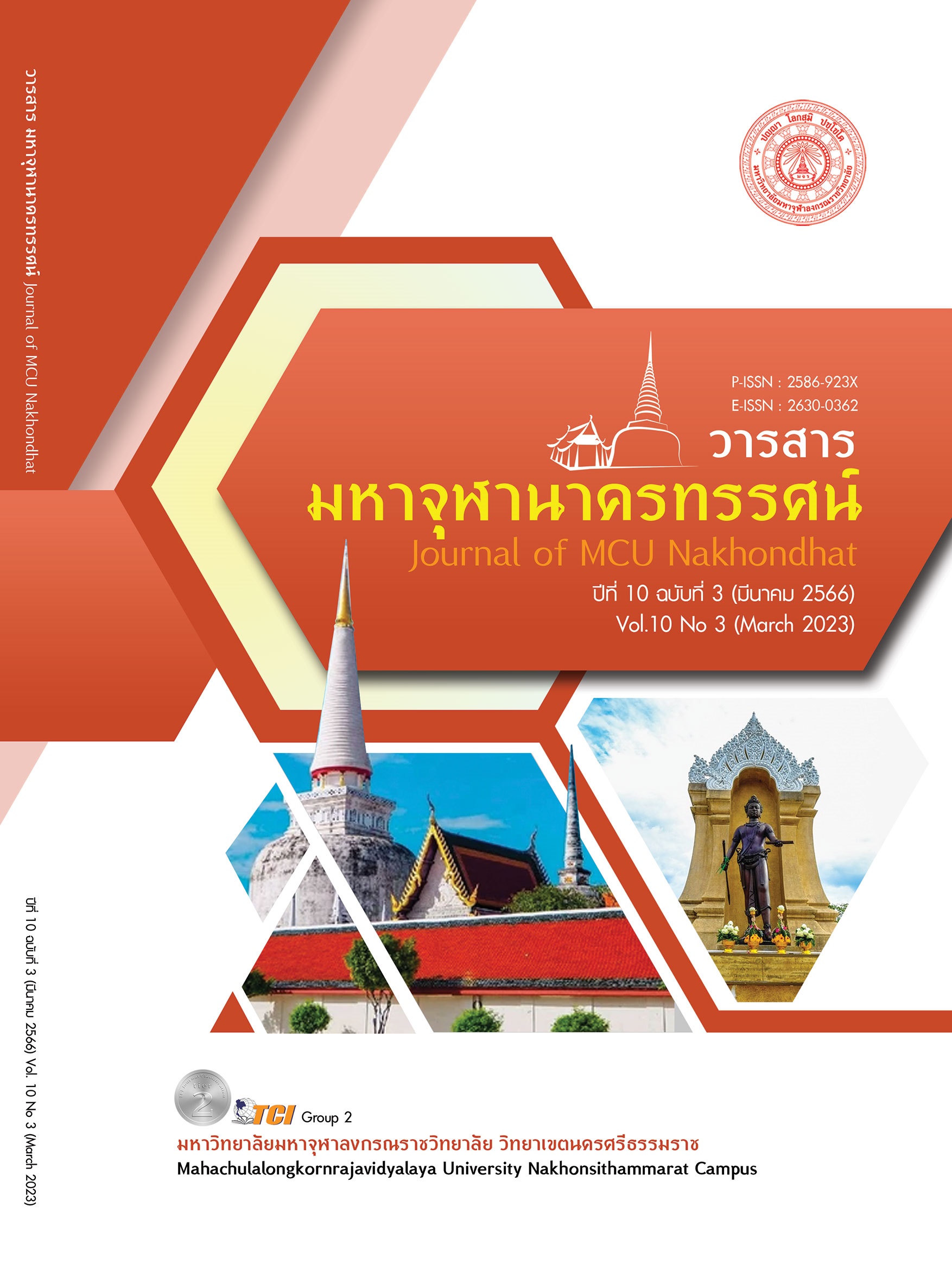THE EFFECTS OF LEARNING ACTIVITIES ON PRINCIPLE OF STATISTICS USING BLENDED LEARNING METHOD WITH COOPERATIVE LEARNING ACTIVITIES BY LEARNING TOGETHER TECHNIQUE FOR STUDENTS OF PRIVATE UNIVERSITY IN NAKHON PATHOM PROVINCE
Main Article Content
Abstract
The purposes of this research were: 1) to compare the students’ learning outcomes gained before and after they studied the Principle of Statistics course using the Blended Learning method with Cooperative Learning Activities by the Learning Together Technique, and 2) to investigate the students’ satisfaction towards the Principle of Statistics course using the Blended Learning method with Cooperative Learning Activities by the Learning Together Technique. This research methodology was the quantitative research. The research sample was 56 second-year students who registered in TSTA3102 Principle of Statistics course which are chosen from the simple random sampling method. The instruments were the tests of the Principle of Statistics course and the questionnaire inquiring the students’ satisfaction towards the Principle of Statistics course using the Blended Learning method with Cooperative Learning Activities by the Learning Together Technique. The data were statistically analyzed by means, standard deviation, and paired sample t-test. The results of this research revealed that 1) the students who learned the Principle of Statistic course using Blended Learning method with Cooperative Learning Activities by the Learning Together Technique gained higher learning outcomes than before studying this technique with a statistically significant difference of .05 and 2) the overall students’ satisfaction was at the highest level.
Article Details

This work is licensed under a Creative Commons Attribution-NonCommercial-NoDerivatives 4.0 International License.
References
จักรกฤษณ์ สิริริน. (2561). Blended Learning ชั่วโมงนี้ดีที่สุด เหมาะสุดสำหรับผู้เรียนและผู้สอนในยุคดิจิทัล. เรียกใช้เมื่อ 23 เมษายน 2564 จาก https://www.salika.co /2018/09/05/blended-learning/
ชนินทร์ พุ่มบัณฑิต. (2563). พัฒนาการผลสัมฤทธิ์ทางการเรียนโดยเทคนิคการสอนแบบร่วมมือ(LearningTogether: LT) สำหรับการเรียนการสอนวิชาการคิดสร้างสรรค์และนวัตกรรมทางธุรกิจ ในยุคไทยแลนด์ 4.0. วารสารจันทรเกษมสาร, 26(1), 61-73.
ณรัณภัสสร์ ฐิติพัทธกุล. (2563). ถอดบทเรียนเปลี่ยนห้องเรียนสู่ online รับมือ COVID-19. เรียกใช้เมื่อ 22 เมษายน 2564 จาก https://www.disruptignite.com/blog /online-classroom-tips
เทื้อน ทองแก้ว. (2563). การออกแบบการศึกษาในชีวิตวิถีใหม่: ผลกระทบจากการแพร่ระบาด COVID-19 New Normal Based Design in Education: Impact of COVID-19. วารสารคุรุสภาวิทยาจารย์, 1(2), 1-10.
ธิดารัตน์ เลิศวิทยากุล. (2562). ประสิทธิผลของรูปแบบการเรียนการสอนแบบผสมผสานเพื่อส่งเสริมผลการเรียนรู้ รายวิชาจริยศาสตร์และกฎหมายวิชาชีพ สำหรับนักศึกษาพยาบาล. วารสารวิทยาลัยบัณฑิตเอเซีย, 9(พิเศษ), 125-132.
นัทธี สุรีย์. (2564). VR AR โลกใบที่สองเพื่อการเรียนรู้. EdSociate โครงการนวัตกรรมการศึกษาEdSociate ภายใต้วิทยาลัยการศึกษาตลอดชีวิต [Webinar]. มหาวิทยาลัยเชียงใหม่.
ปรีชา พินชุนศรี และฐิติกร จันทพลาบูรณ์. (2560). ผลกระทบของเทคโนโลยีสารสนเทศที่ส่งผลต่อพฤติกรรมเยาวชน. วารสารมหาวิทยาลัยคริสเตียน, 23(3), 532-539.
ปิยาพร สินธุโคตร. (2563). ประสิทธิผลของการจัดการเรียนการสอนแบบผสมผสานต่อผลสัมฤทธิ์ทางการเรียนในรายวิชาการพยาบาลเด็กและวัยรุ่น 2 ของนักเรียนพยาบาลศาสตร์ชั้นปีที่ 3วิทยาลัยพยาบาลกองทัพเรือ. วารสารแพทย์นาวี, 47(1), 158-171.
รุจิรา เศารยะสกุล ฐาปนี สีเฉลียว และศรีสุดา สิงห์ชุม. (2561). ผลการจัดการเรียนรู้แบบร่วมมือตามรูปแบบแอล.ที เพื่อพัฒนาทักษะการทำงานเป็นทีมสำหรับนักเรียนชั้นมัธยมศึกษาปีที่ 1โรงเรียนสาธิตมหาวิทยาลัยมหาสารคาม (ฝ่ายมัธยม). วารสารเทคโนโลยีและสื่อสารการศึกษาคณะศึกษาศาสตร์ มหาวิทยาลัยมหาสารคาม, 1(2), 98-105.
สำนักงานเลขาธิการสภาการศึกษา กระทรวงศึกษาธิการ. (2560). แผนการศึกษาแห่งชาติ พ.ศ. ๒๕๖๐ – ๒๕๗๙. กรุงเทพมหานคร: บริษัท พริกหวานกราฟฟิค จำกัด.
สำนักงานส่งเสริมสังคมแห่งการเรียนรู้และคุณภาพเยาวชน. (2557). ยุทธการเปลี่ยน ‘ครูเฉย’ สู่ครูยุคศตวรรษที่21. เรียกใช้เมื่อ 10 เมษายน 2564 จาก http://seminar. qlf.or.th/Seminar/Topic/29
Hobri, H. et al. (2018). The implementation of Learning Together in Improving Students’ athematical Performance. International Journal of Instruction, 11(2), 483–496.
Schwager, S. et al. (2019). Healthy learning together. Development of a Tool for Schools to Prevent Psychological Problems among Children and Adolescents, 14(1), 3-8.


